Tsinghua EE professors and industry experts delivered lectures on smart transportation, biomedicine, AI systems, large language models, chip design, and industrial green transformation, etc.
Lecture: Audio-visual large language models that can understand our physical world
Prof. Chao Zhang, Tsinghua EE
The lecture is divided into three parts:
• Background: Basics of language models; Large language models with their history and training procedure; Basics of audio, speech, and music perception tasks; basics of video perception tasks.
• Approach: Basics of multimodal large language models, in particular those related to audio and video perception and understanding; introduce the SALMONN (speech audio language music and video neural network) developed by our team; discuss the design choices among SALMONN, Google Gemini 1.5 Pro and GPT-4o (based on limited information and guesses).
• Demonstration and QA: Students can interact with the SALMONN model with audio and audio-video perception tasks; Questions and discussions can be made on call.
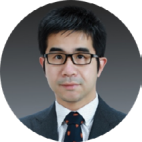
ZHANG, Chao
Assistant Professor
Dept of Electronic Engineering, Tsinghua Univ.
cz277@tsinghua.edu.cn
Professor Zhang is an Assistant Professor at the Department of Electronic Engineering at Tsinghua University, and an Honorary Associate Professor at the Faculty of Brain Sciences, University College London (UCL). His research interests include multimodal speech and language processing technologies and computational cognitive neuroscience. Chao received his Bachelor's and Master's degrees in Computer Science and Technologies from Tsinghua University in 2009 and 2012, respectively, and earned his Ph.D. degree from Cambridge University Engineering Department (CUED) in 2017. Post Ph.D., he worked as a Research Associate and Visiting Fellow at CUED, an Advisor and Speech Team Co-Leader at JD.com, as well as a Senior Research Scientist at Google. Chao has published over 80 peer-reviewed conference and journal papers, including the papers received best student paper awards at ICASSP 2014, ASRU 2019, SLT 2021, and Interspeech 2022.
Lecture: Rethinking on Computing Systems for AI: What Can We Do with/after In-Memory Computing?
Prof. Hongyang Jia, Tsinghua EE
Recent research on in-memory computing (IMC) circuits provides multiple memory technologies and computing schemes for building energy-efficient systems.
The lecture is divided into three parts:
• This talk will provide an integrated view of different IMC approaches and traditional spatial architectures, and introduce the application of IMC in the field of artificial intelligence.
• Based on the architectural abstraction, we will discuss the challenges and practices of integrating IMC with processors and systems at scale. We will also introduce recent prototypes focusing on functions and metrics other than matrix-vector multiply and peak energy efficiency.
• Summarize the architectural development paradigm from traditional CPUs to in-memory computing technology, and discuss the possible directions of the next generation of computing systems.
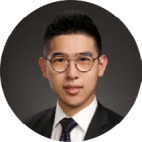
JIA, Hongyang
Assistant Professor
Dept of Electronic Engineering, Tsinghua Univ.
hjia@tsinghua.edu.cn
Professor Jia received his bachelor degree on Microelectronics and the second bachelor degree on Economics from Tsinghua University in 2014, and his master and doctoral degrees from the Department of Electrical Engineering and Computer Science at Princeton University in 2016 and 2021, respectively. Subsequently, he served as a postdoctoral researcher at Princeton University and NVIDIA Research, and joined the Department of Electronic Engineering at Tsinghua University as a full-time faculty member in August 2022.
His research focuses on emerging computing technologies and their optimization in integration with large-scale integrated circuits and architectures, including directions such as approximate computing and in-memory computing. He has published papers in top conferences and journals in the field of integrated circuits, such as ISSCC, JSSC, VLSI, and Hot Chips. He serves as a technical committee member and reviewer for multiple IEEE conferences and journals, including ICCAD and JSSC.
Green Technology Innovation: Driving a New Wave of Global Industrial Revolution
Prof. Hengyuan Zhu, Tsinghua School of Economics and Management
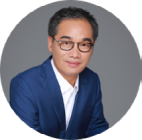
ZHU, Hengyuan
Professor
School of Economics and Management, Tsinghua Univ
Professor Zhu's research areas are industrial transformation, corporate strategy, innovation, and entrepreneurship in a dynamic environment. Together with Professor Yang Bin, he developed the Strategic Rhythm Theory, introducing innovation diffusion theory into strategic research from a demand perspective. He proposed the "PRE-M Model" strategic analysis framework, explaining how to grasp strategic rhythm in a dynamic and complex business world. His research has been published in journals such as Journal of Product Innovation Management, International Journal of Technology Management, R&D Management, Research-Technology Management.
Professor Zhu has been selected as Rong Hong Technical Management Scholar, Santander Entrepreneurship Education Scholar, and Fulbright Scholar.
Accelerating Sustainable Technology Development with MATLAB & Simulink
KajiaRuan, Senior Team Leader, MathWorks EDU Customer Success Engineer Team
Climate change is a key challenge facing the world and sustainable technology development is imperative for tackling it. In this talk, students will learn how MATLAB and Simulink are propelling innovations in renewable energy, electric vehicles (EVs), intelligent buildings, energy-efficient communications and green electronics. Students will hear real-world examples of how engineers enhance research, facilitate rapid prototyping, and optimize multidomain systems with MathWorks tools. Students will also gain an appreciation of the importance of AI and electrification in many areas of sustainable technology development.
Lecture:Wireless Communications-assisted Smart Transportation
Prof. ShengZhou, Tsinghua EE
This talk will start with the basic introduction of smart transportation in smart cities and in particular, the autonomous driving technologies. The limitations of stand-alone autonomous driving are discussed, followed by the introduction of vehicle to everything (V2X) communications, and the V2X-assisted connected autonomous driving. We then delve into one particular application in connected autonomous driving, i.e, the collaborative perception (CP). CP can enhance the perception reliability of autonomous driving, as compared to stand-alone intelligence. However, the limited V2X bandwidth pose challenges on the information exchange, in addition to the dynamic spatial and temporal relationship among sensors on vehicles. This talk will introduce research efforts toward practical CP, and the simulation platform as well as the datasets people have developed. The talk will be concluded with discussions on future diections for connected autonomous driving and in general, smart transportation.
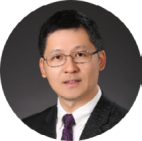
ZHOU, Sheng
Associate Professor
Dept of Electronic Engineering, Tsinghua Univ.
sheng.zhou@tsinghua.edu.cn
Professor Zhou received his B.S. and Ph.D. degrees from Tsinghua EE in 2005 and 2011, respectively. From January to June 2010, he was a visiting student at Wireless System Lab, Electrical Engineering Department, Stanford University. From November 2014 to January 2015, he was a visiting researcher in Central Research Lab of Hitachi Ltd., Japan. His research interests include cross-layer design for multiple antenna systems, cooperative transmission in cellular systems, vehicular networks, edge computing, and green wireless communications.
Lecture: Revolutionizing Urban Sustainable Mobility: The powerful combination of AIGC and City Simulators
Prof. Yong Li, Tsinghua EE
This talk examines the transformative impact of combining AI Generated Content (AIGC) and city simulators to revolutionize urban mobility systems. By harnessing the power of AI capabilities, global connectivity, and realistic virtual environments, the integration of AIGC and city simulators offers unprecedented opportunities to reshape how people and goods move within cities. The talk will delve into the process of how AI generated content and insights empower city simulators to conduct data-driven simulations of urban mobility scenarios. These simulations enable comprehensive analysis and optimization of various aspects of urban mobility systems, including traffic flow, infrastructure design, public transit planning, and mobility services. By utilizing data-driven simulations, policymakers, urban planners, and transportation experts can make well-informed decisions, improve efficiency, alleviate congestion, enhance safety, and establish sustainable and future-proof urban mobility systems.
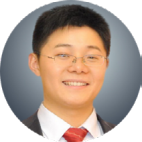
LI, Yong
Associate Professor
Dept of Electronic Engineering, Tsinghua Univ.
liyong07@tsinghua.edu.cn
Professor Li is currently a Tenured Associate Professor of the Department of Electronic Engineering, Tsinghua University. He received the Ph.D. degree in electronic engineering from Tsinghua University in 2012. His research interests include city science and urban computing. Dr. Li has served as General Chair, TPC Chair, SPC/TPC Member for several international workshops and conferences, and he is on the editorial board of two IEEE journals. He has published over 100 papers on first-tier international conferences and journals, including Nature Human Behavior, Nature Computational Science, KDD, NeurIPS ,WWW, UbiComp, and his papers have total citations more than 24000. Among them, five receive conference Best Paper (run-up) Awards.
Lecture: Explore the Intersection of Microwave Electromagnetism, Deep Learning, and Medical Diagnostics
Prof. Maokun Li, Tsinghua EE
The lecture is divided into three parts:
• Theory: Integration of Electromagnetics and Deep Learning in the Biomedical Field
Introduction to Bioelectrical Impedance; Example Applications: Body Fat Scale (Measurement Principles and Data Processing Methods), and Monitoring Devices for Respiratory and Electrocardiographic Measurements; Fundamentals of Electrical Impedance Tomography (EIT)
• Experiments: Hands-on Experience with EIT. Students will be guided through the basic operation of EIT equipment, and conduct EIT experiments to gain practical experience
• Analysis: Clinical Applications of EIT. Analyze some clinical cases related to EIT applications; Discuss how EIT technology can be utilized in real-world medical scenarios

LI, Maokun
Professor
Dept of Electronic Engineering, Tsinghua Univ.
maokunli@tsinghua.edu.cn
Professor Li serves as the Deputy Chair and a tenured professor at the Department of Electronic Engineering (EE) at Tsinghua University. He received his Bachelor's degree from Tsinghua EE Department in 1998. He then went on to pursue his Ph.D. in Electrical and Computer Engineering from the University of Illinois at Urbana-Champaign, graduating in 2007. Following his Ph.D., Professor Li worked as a Senior Research Scientist at the Doll Research & Development Center of Schlumberger Limited in the United States.
In June 2014, Professor Li joined the Microwave and Antenna Institute at Tsinghua EE Department. His primary research interests lie in the field of electromagnetic field theory and computational electromagnetics, with applications in biomedical imaging and geophysical exploration. Professor Li has published or co-published over 130 SCI journal articles, one monograph, and two book chapters. His work has been cited over 6800 times, with an H-indexof 45 (Google Scholar data).
Lecture: Introduction to Low Power Wireless Biopotential Sensor Design
Prof. Milin Zhang, Tsinghua EE
Biopotential signals acquisition plays a critical role in a human-computer interface system. Most of these biopotential signals distributed in the band of lower than kilo-hertz, or even lower than hundreds hertz. Precise acquisition of low amplitude signal at near DC frequency band is a challenge. In addition, the wearable/implantable scenario rises a high requirement in power efficiency, which causes a very limited power budget for the typically power hungry wireless data transmission. The existed commercial solutions, such as BLE and/or WiFi, are not suitable. This seminar introduces several System-on-Chip (SoC) key technologies for the wireless acquisition of the biopotential signals.
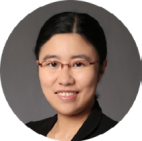
ZHANG, Milin
Associate Professor
Dept of Electronic Engineering, Tsinghua Univ.
zhangmilin@tsinghua.edu.cn
Professor Zhang is an associate professor in the department of Electronic Engineering, Tsinghua University. She received the B.S. and M.S. degrees in electronic engineering from Tsinghua University, Beijing, China, in 2004 and 2006, respectively, and the Ph.D. degree in the Electronic and Computer Engineering Department, Hong Kong University of Science and Technology (HKUST), Hong Kong. After finishing her doctoral studies, she worked as a postdoctoral researcher at the University of Pennsylvania (UPenn). She joined Tsinghua University in 2016. Her research interests include designing of various non-traditional imaging sensors and sensor interface circuit and system design for biomedical applications.
She serves and has served as the Senior Associate Editor (SAE) of TCAS-II, Associate Editor (AE) of TBioCAS, the TPC member of ISSCC, CICC, A-SSCC and CASS. She is the Chapter chair of the SSCS Beijing chapter. She is the Distinguished Lecturer of CASS and IEEE WiE.
Lecture: Bio-integrated Electronics
Prof. Xing Sheng, Tsinghua EE
• A summary of history of integrated circuit manufacturing
• Bio-integrated devices and their applications
• Our lab’s research about implantable neural sensors and modulators.
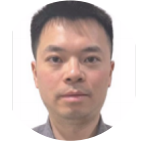
SHENG, Xing
Associate Professor
Dept of Electronic Engineering, Tsinghua Univ.
xingsheng@tsinghua.edu.cn
Professor Sheng is currently working as an endowed associate professor in the Department of Electronic Engineering at Tsinghua University, China. He received his bachelor and PhD degrees from Tsinghua University and Massachusetts Institute of Technology, respectively. He worked as a postdoctoral researcher at University of Illinois Urbana-Champaign. His current interests are primarily in the exploration of implantable micro- and nano-scale optoelectronic devices for neural signal sensing and modulation. He has published more than 100 papers in peer-reviewed journals like Nature Photonics, Nature Biomedical Engineering, Nature Communications, Science Advances, PNAS, etc. He is a senior member of IEEE, a life member of SPIE, and a fellow of Optica.